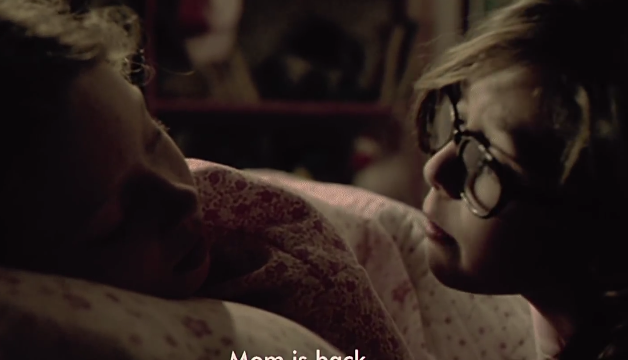Mamá (2008) dir. Andrés Muschietti
Wake up. Mom is back.
It’s easy to see what caught del Toro’s eye in this brief horror ride. Muschietti and cinematographer Sebastián Sarraute present a clear vision both in terms of lighting, framing and motion that keeps the action easy to follow and matches our own dread-filled curiosity: What’s outside the door? Can we get out? What’s down that hallway?
Forgive the suspect quality on this link. I chose it because it’s the only place I could find the full version online. Most have been replaced with a version that begins with a introduction by Guillermo del Toro (who snapped up the film and developed it into a feature with co-writer/director Andrés Muschietti) and ends with an ad to see the feature version. Curiously, those versions also eliminate the coda (i.e. – the second shot).
Maybe it was considered a spoiler for the feature? Its elimination doesn’t shortchange the film. It’s actually an improvement in some ways, biting off the film at its pinnacle rather than adding a more obvious twist that leaves us thinking about the story rather than sitting with our fight-or-flight pulse.
Short form benefits horror. Even in the world of features few run particularly long (with some notable exceptions including by Muschietti himself). Since horror involves controlling what the audience understands and perceives right up until the tension is released in a scare, longer runtimes tend to require more information to fill the time and more opportunities for the spell to break under the weight of information.
In “Mamá,” we’re given nearly zero information. We can infer these are two sisters and there is a concern about the whereabouts of Mamá. Onto this we can graft any number of possibilities from a strict matriarch to an abusive household situation, a literal monster or a figurative one. And the film creates a suspended state where all these realities exist at the same time until we’re looking down that hallway. Even when confronted with Mamá we’re at a loss with how to deal with her (it?) with so few clues what she is and what she wants. What is she? What does it mean that she’s “back”? The clues and cues pointing somewhere outside what we can know contributes to the quality of a nightmare.
It’s pretty clear from the moment the title scrawls itself across the board we’re in a horror film and the suspense comes from delaying the discovery of what kind. A short can stretch this suspense from end to end in a way a feature cannot.

